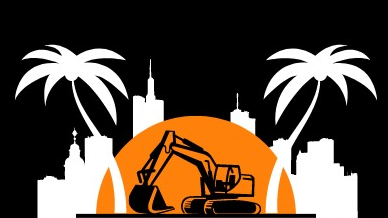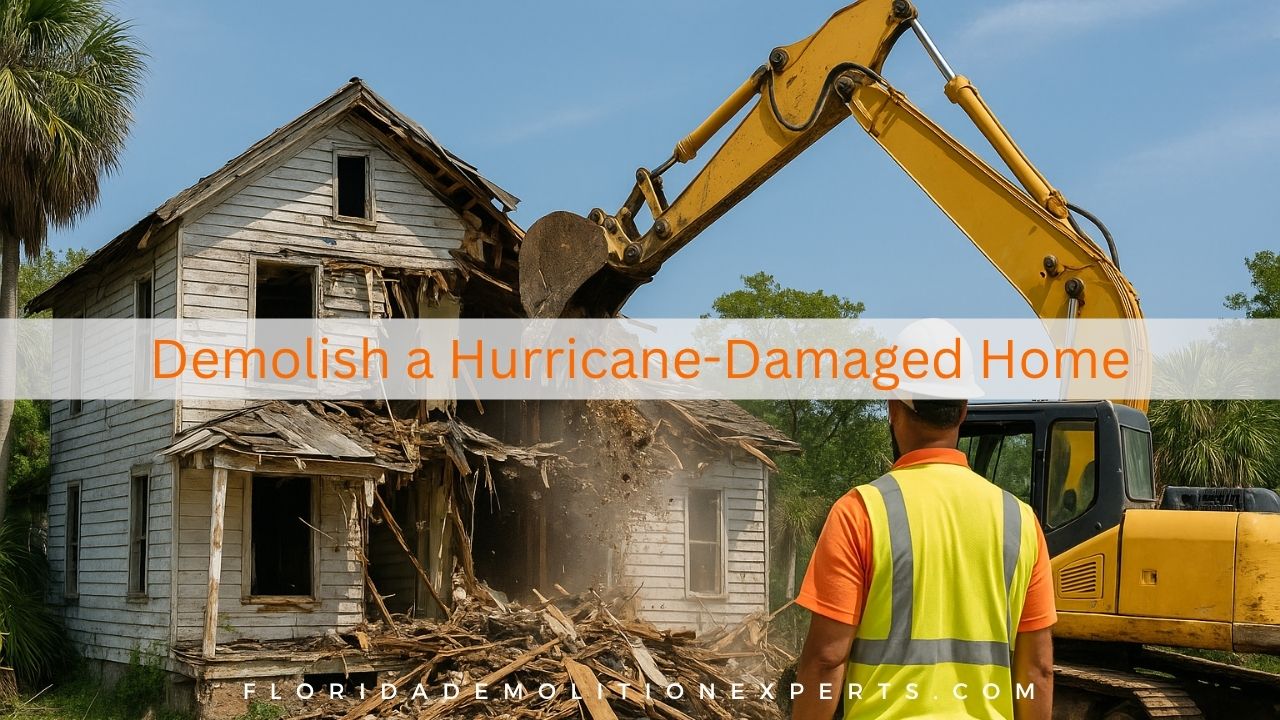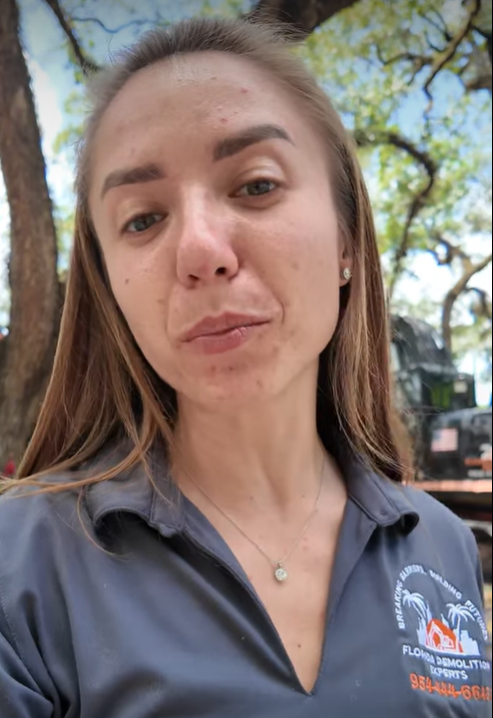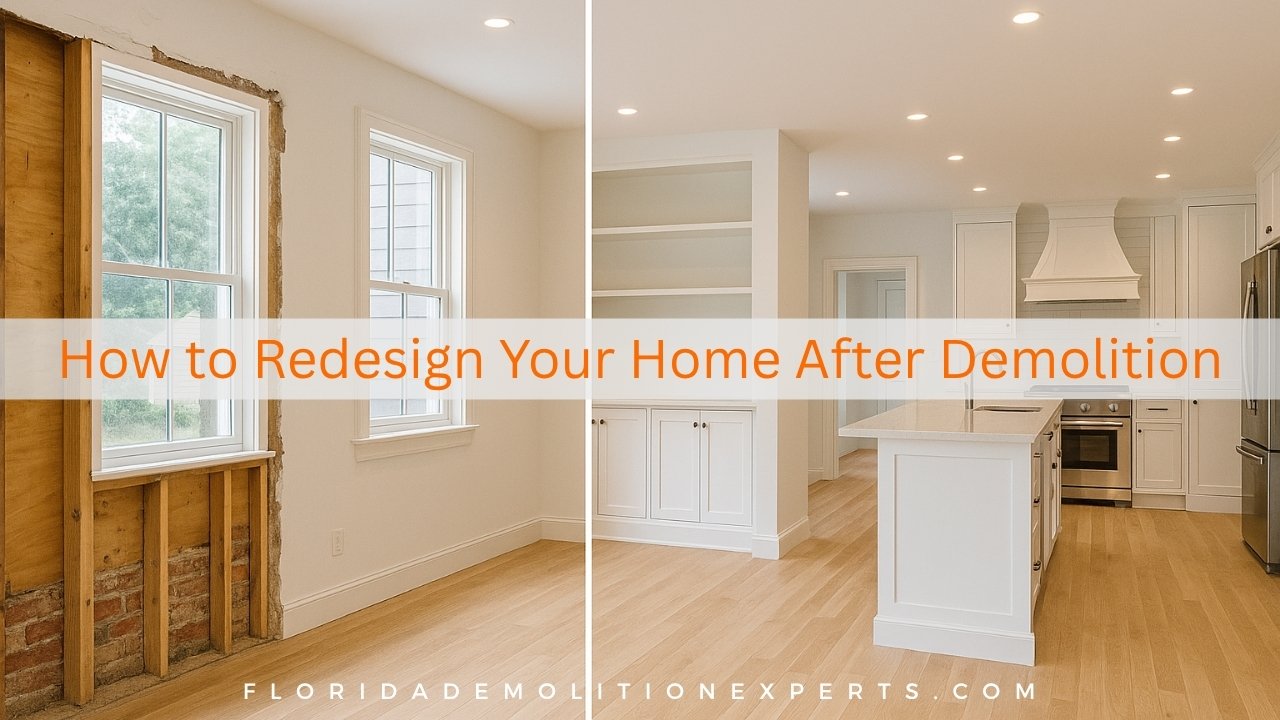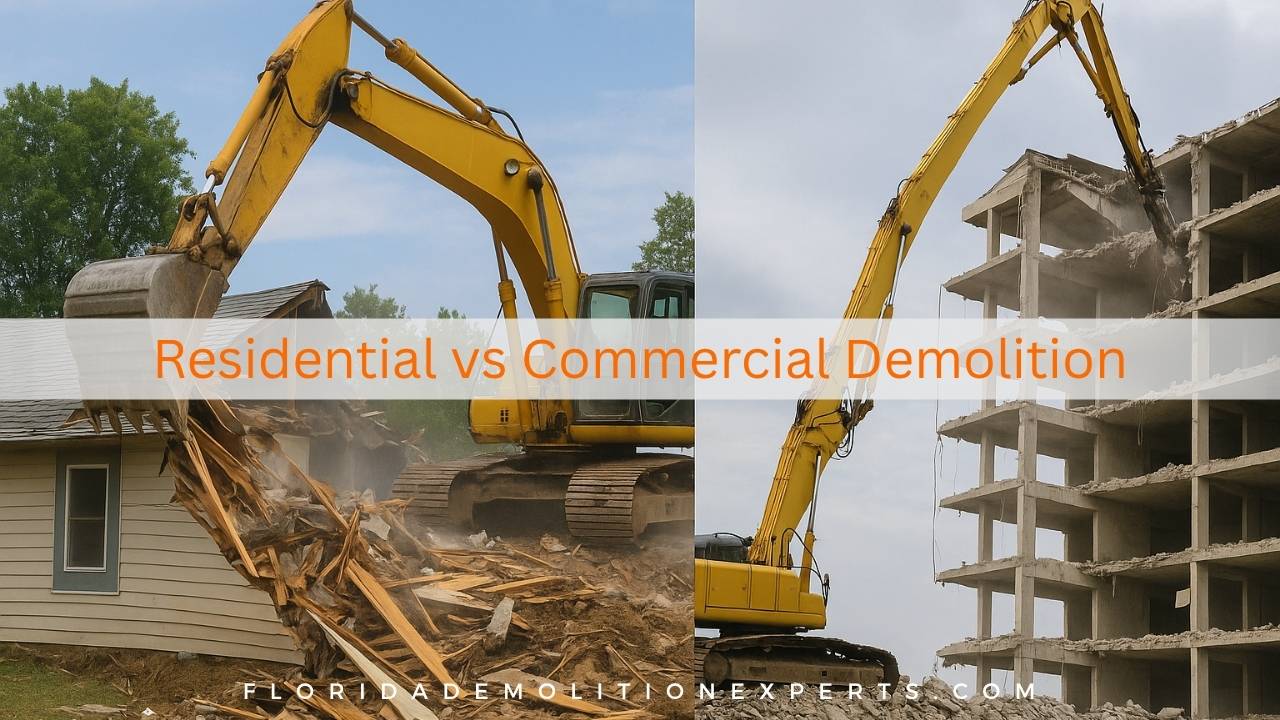Your Florida home was damaged by a hurricane… now what? The walls may be soaked, the roof torn open, and the structure no longer repairable. When storms turn homes into hazards, safe demolition becomes the first step toward rebuilding your peace of mind.
Florida has strict rules for removing hurricane-damaged structures, so doing it right protects your family, your neighbors, and the environment we all share.
Welcome to your expert guide on How to Demolish a Hurricane-Damaged Home Safely, written with real Florida know-how.
Why Safe Demolition Matters After a Hurricane
A hurricane-damaged home may look still standing, yet it can hide serious risks like collapsing structures, mold growth, sharp debris, and exposed electrical lines. Older houses may even contain disturbed asbestos or lead.
Safe and professional demolition removes these hazards quickly and responsibly, protecting people and the environment and ensuring your property is ready for a secure rebuild.
Step-by-Step Guide to Hurricane Home Demolition in Florida
1. Hire a Licensed Florida Demolition Contractor
Not all demo jobs are the same. Storm-damaged homes require:
- State-licensed professionals
- Workers’ compensation and general liability insurance
- Hurricane recovery experience
Always verify license status with the Florida Department of Business & Professional Regulation.
2. Conduct a Comprehensive Safety & Structural Inspection
Experts assess:
- Remaining structural stability
- Underground utilities
- Water and electrical hazards
- Roof and wall integrity
This determines whether partial or complete demolition is required.
3. Manage Permits and Legal Requirements
In Florida, paperwork is the real wrecking ball:
- Local demolition permit
- Utility disconnect authorization
- Asbestos inspection clearance
- Waste transport consistency reports
- Flood zone regulations in coastal areas
Failing to comply can trigger fines or delays.
4. Remove Hazardous Materials First
Damaged homes often contain:
- Mold-infested drywall
- Asbestos floor tiles or siding
- Lead-based paint debris
- Fuel leaks and chemical contamination
Licensed abatement teams ensure safe removal before teardown starts.
5. Disconnect and Secure All Utilities
Sparks are not your friend.
- Water
- Gas
- Electricity
- Sewer
Certified technicians cap and lock systems to avoid explosions or flooding.
6. Choose the Right Demolition Method
Depending on safety and property needs:
- Mechanical demolition: excavators and machines for fast removal
- Selective/hand demolition: protects salvageable materials
- Deconstruction: eco-friendly, recovers timber, doors, metal, etc.
The right choice saves time and money.
7. Contain Debris and Protect Surroundings
Florida regulations prioritize:
- Stormwater pollution control
- Dust suppression with water spraying
- Safety zones around neighboring homes
Nearby pools, trees, and sidewalks must remain unharmed.
8. Proper Waste Removal and Recycling
Hurricane debris can’t go just anywhere.
- Sorting concrete, wood, and metals
- Transporting to approved landfills or recycling centers
Your contractor must track debris documentation for local authorities.
9. Final Site Grading and Cleanup
The rebuild begins here:
- Leveling the ground
- Removing buried hazards
- Preparing for new construction
Clean site = clean slate.
When to Demolish vs. Repair After a Hurricane
Demolition is usually recommended if:
- Repair cost exceeds 50% of replacement value
- The home sits in a repetitive flood-loss zone
- Structural damage compromises long-term safety
Insurance adjusters and engineers help confirm the best option.
Insurance Tip
Document everything before the demo:
- Photographs
- Damage reports
- Contractor estimates
- Permit approvals
Clear proof helps maximize your insurance payout.
FAQ’s
How do I know if my home needs demolishing after a hurricane?
If structural repairs cost more than replacement or the home poses safety risks due to instability, mold, or severe flooding, demolition is usually recommended. A licensed inspector or engineer can provide a clear assessment.
Will insurance cover the cost of demolition?
Most Florida home insurance policies include demolition and debris removal when the damage is storm-related. Coverage depends on your policy terms, so document everything and coordinate with your adjuster early.
Do I need a demolition permit after a hurricane?
Yes. Even after a natural disaster, Florida law requires proper permitting, utility disconnect approvals, and environmental checks before any structure is torn down.
How long does hurricane-damage demolition take?
Every property is different. Smaller homes may be cleared in a few days, while larger or heavily regulated coastal sites can take several weeks due to permits, inspections, and debris management.
What happens to all the debris?
Registered Florida contractors sort and dispose of materials following state environmental guidelines, recycling usable concrete, metal, and wood whenever possible.
Ready to Clear the Damage and Rebuild?
Hurricanes may knock you down, yet rebuilding can begin with a single decision. Let Florida Demolition Experts safely remove what’s broken so you can create something better.
Call Florida Demolition Experts Today. Your fresh start begins with safe demolition.


